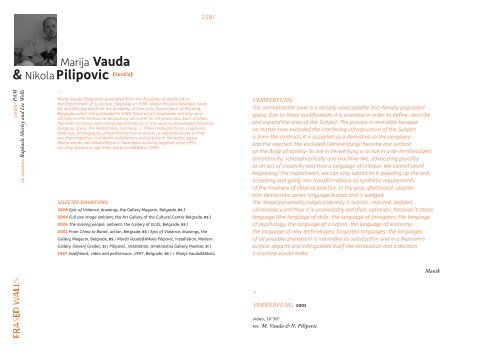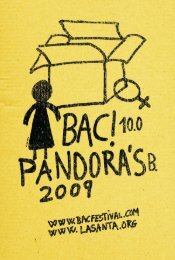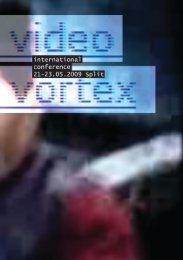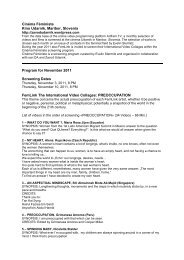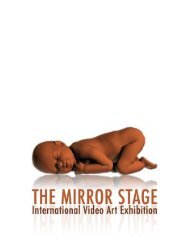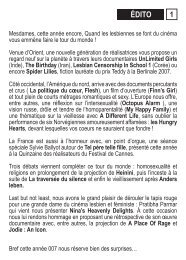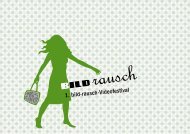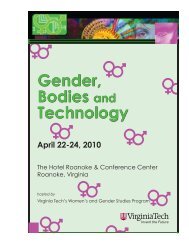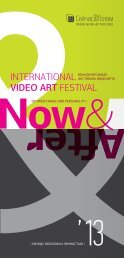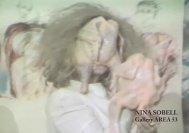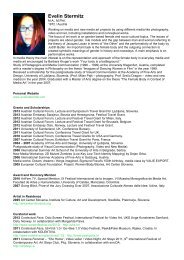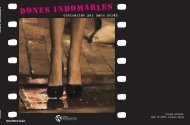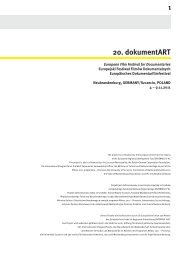PoznaÅ
PoznaÅ
PoznaÅ
Create successful ePaper yourself
Turn your PDF publications into a flip-book with our unique Google optimized e-Paper software.
228/<br />
Marija Vauda<br />
& Nikola Pilipovic (Serbia)<br />
curator PAM<br />
co-curators Raphaele Shirley and Lee Wells<br />
_<br />
Marija Vauda (Belgrade) graduated from the Academy of Applied Arts,<br />
the Department of Sculpture, Belgrade, in 1986. Nikola Pilipović(Kikinda) holds<br />
BA and MA degrees from the Academy of Fine Arts, Department of Painting,<br />
Belgrade, which she graduated in 1986.These artists have been working very<br />
actively on the Serbian contemporary art scene for 20 years now. Each of them<br />
has held numerous solo and group exhibitions in the country and abroad (Slovenia,<br />
Bulgaria, Grece, the Nederlands, Germany...). They create paintings, sculptures,<br />
drawings, photography, phoperformances and texts as separate works or they<br />
put them together in ambient installations and actions in the public space.<br />
Marija Vauda and Nikola Pilipović have been working together since 1993,<br />
but they started to sign their works as MANIK in 1999.<br />
SELECTED EXHIBITIONS:<br />
2008 Epic of Violence, drawings, the Gallery Magacin, Belgrade, RS /<br />
2006 Full size image ambient, the Art Gallery of the Cultural Centre Belgrade, RS /<br />
2004 The missing people, ambient, the Gallery of ULUS, Belgrade, RS /<br />
2001 From China to Banat, action, Belgrade, RS / Epic of Violence, drawings, the<br />
Gallery, Magacin, Belgrade, RS / Marija Vauda&Nikola Pilipović, installation, Modern<br />
Gallery, Slovenj Gradec, SI / Pilipović, installation, Umetnostna Gallery, Maribor, SI /<br />
1997 Inselfment, video and performace, 1997, Belgrade, RS / + Marija Vauda&Nikola<br />
VERWERFUNG<br />
The uninhabitable zone is a socially unacceptable but densely populated<br />
space. Due to these qualifications it is essential in order to define, describe<br />
and expand the area of the Subject. The process is reversible because<br />
no matter how excluded the interfering infrastructure of the Subject<br />
is from the contract, it is accepted as a derivative so the periphery<br />
and the rejected, the excluded (Verwrenfung) become one surface<br />
on the Body of society. To live in Verwerfung is to live in a de-territorialized<br />
discontinuity, schizophrenically and machine-like, advocating plurality<br />
as an act of creativity and thus a language of critique. We cannot avoid<br />
hegemony/ the mainstream, we can only submit to it speeding up the end,<br />
accepting and going into transformations as synthetic requirements<br />
of the madness of illogical practice. In the gray, ghettoized, utopian<br />
non-democratic zones language buzzes and is wedged.<br />
The image/personality/subject/identity is autistic, rejected, isolated,<br />
unnecessary and thus it is unavoidably satisfied, optimistic because it steals<br />
language (the language of skills, the language of foreigners, the language<br />
of psychology, the language of a nation, the language of economy,<br />
the language of new technologies, forgotten languages, the languages<br />
of all possible alienation) it intensifies its satisfaction and in a Riemann’s<br />
surface departs and extinguishes itself like exhaustion and a decision<br />
a machine would make.<br />
Manik<br />
><br />
VERWERFUNG, 2001<br />
video, 10’30“<br />
FOT. M. Vauda & N. Pilipovic


